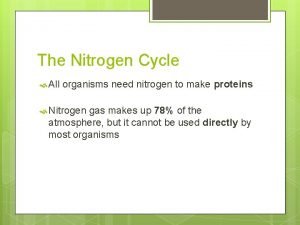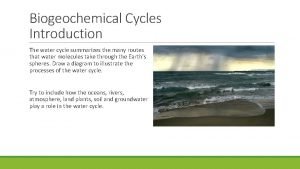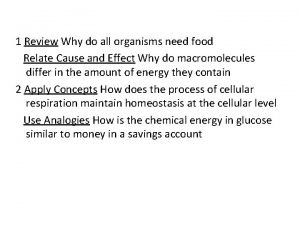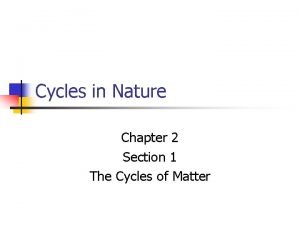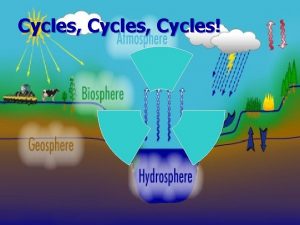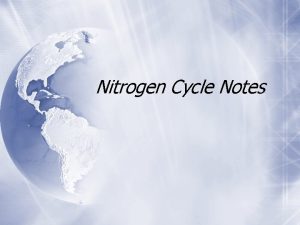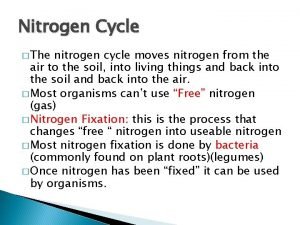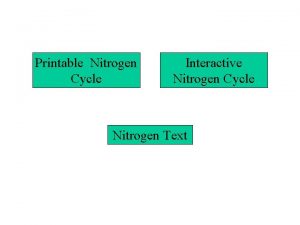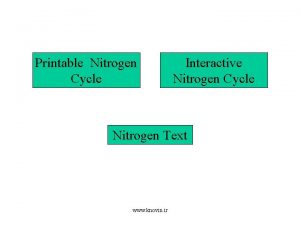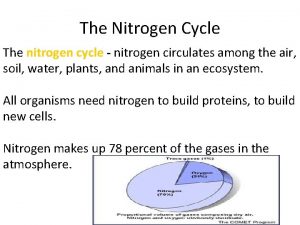CHEMICAL CYCLES Nitrogen Cycle Organisms need nitrogen N








- Slides: 8

CHEMICAL CYCLES

Nitrogen Cycle Organisms need nitrogen (N) to make protein Nitrogen exists in nature in many different forms Free nitrogen in the atmosphere is N 2 Makes up about 70% of the atmosphere Most organisms cannot use free nitrogen Ammonia is NH 3 Nitrate is NO 3 Plants can use ammonia and nitrate

Nitrogen Cycle Nitrogen fixation: turning free nitrogen into usable molecules, like ammonia (NH 3) and nitrate (NO 3) Usually done by bacteria in the soil Plants will use the nitrogen compounds from the soil Consumers get the nitrogen compounds from producers Denitrification: Decomposers break down the nitrogen compounds and place free nitrogen back into the atmosphere or soil


Carbon Dioxide and Oxygen Cycle CO 2 and O 2 are found in Earth’s atmosphere Plants take in CO 2 during photosynthesis and release O 2 Animals take in O 2 during cellular respiration and release CO 2

Carbon Dioxide and Oxygen Cycle Plants “breathe” the CO 2 that animals release, and animals breathe O 2 that plants release Decomposers break down dead organisms and release carbon back into the earth Burning fuel, fires, and volcanoes also put carbon dioxide back into the atmosphere

Cellular respiration

Photosynthesis CO 2 + H 2 O + light energy C 6 H 12 O 6 + O 2 Carbon dioxide Water Glucose (sugar; food source) Oxygen Cellular Respiration C 6 H 12 O 6 + O 2 CO 2 + H 2 O + energy Carbon Water Glucose Oxygen dioxide (sugar; food source)
 Why do organisms need nitrogen?
Why do organisms need nitrogen? Compare and contrast carbon and nitrogen cycles
Compare and contrast carbon and nitrogen cycles Why do organisms interact with other organisms
Why do organisms interact with other organisms Unicellular and multicellular.
Unicellular and multicellular. Biogeochemical cycles water cycle
Biogeochemical cycles water cycle Why do all organisms need food
Why do all organisms need food How do animals get the nitrogen they need
How do animals get the nitrogen they need How do animals get the nitrogen they need
How do animals get the nitrogen they need How to remove nitrogen from soil
How to remove nitrogen from soil
